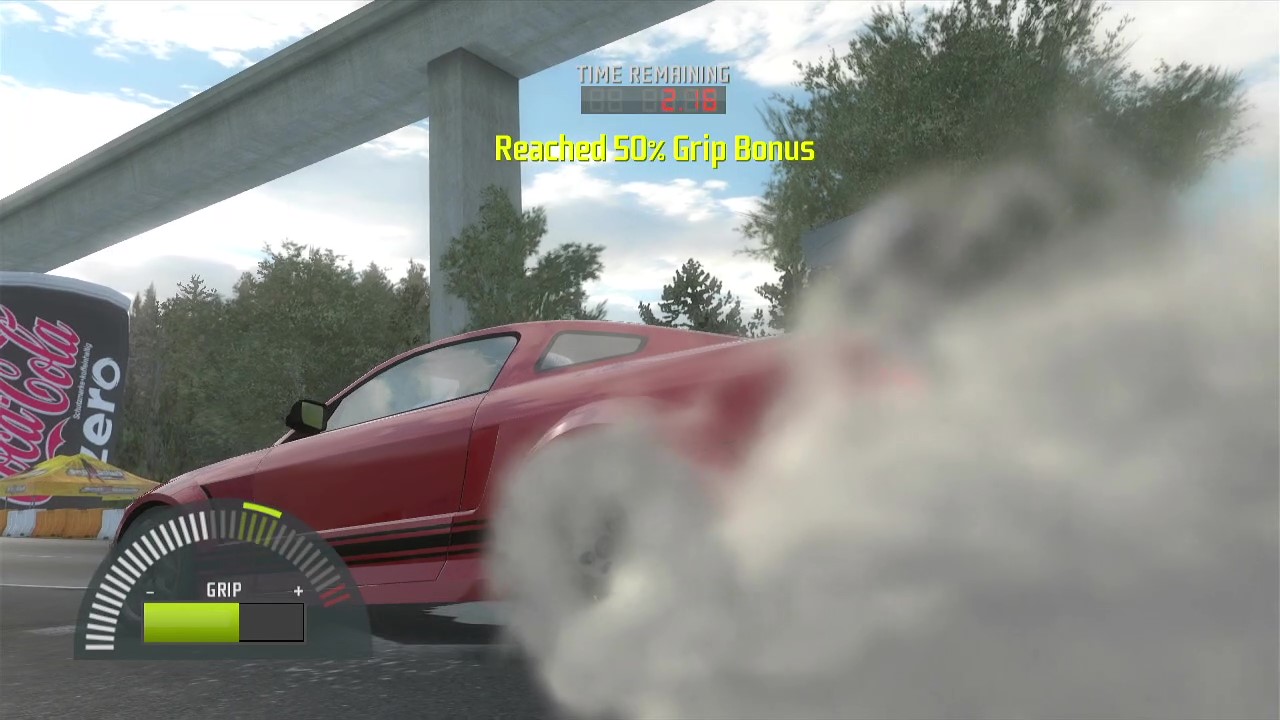(Game Review) Need for Speed: ProStreet
Time to read: 4 min read
 Game Cover
Game Cover
Did you see how crazy this guy is?
Platform played on: Xbox 360
# Review
The mid 2000s was a tricky time for racing games, as the previous focus on illegal street racing is drawing ire from the legal authorities. There is a transition from street racing to formal racing, as well as a transition from arcade racers to simulation racers. No game demonstrates these two shifts better than ProStreet. The shift is literally in the name as well as the story, you play as a former street racer named Ryan Cooper who enters several race events run by different racing organizations.
While this game is technically formal racing, there are still many motifs from street racing, such as the constant graffiti aesthetics of both the cars and the menus. There are also some simulation elements, such as having to pay to repair damaged cars and car tuning being a large factor on car performance (there even was a windtunnel where one can tune the aerodynamics of the car).
 The tuning of the cars can greatly affect performance
The tuning of the cars can greatly affect performance
There were four types of races: Grip (traditional racing), Drag (where one has to time the gear shifts), Drift (where one has to maximize the amount of time drifting), and my favourite, Speed (where one goes as fast as possible and tries not to brake when cornering). The gameplay, both offline and online, takes place within race days, where a series of races are bundled together and the player has to compete in all of them.
 Speed gameplay
Speed gameplay
I really enjoyed the car customization system, especially with regards to car tuning. I didn’t like the system for progression; one has to grind many races to unlock higher performance parts for purchase and the in-game microtransactions (where people can pay real money to unlock anything) was a part of the beginning of EA’s goodwill downfall. I also didn’t like the weird mix between simulation and arcade; some game modes, such as Speed, were clearly arcade game modes but they’re still subjected to realism; for instance, if one crashes their vehicle in Speed (which was frequent), one would have to pay a great amount of in-game currency to recoup the vehicle. Some of the realism settings should have been optional. The Drag game mode was also a bit repetitive.
 Drag gameplay
Drag gameplay
Overall, the game was fabulous from an aesthetic perspective; I appreciate the street racing aesthetics as well as the soundtrack, which featured tons of very edgy mid-2000s punk, electronic, and alternative music. The HD graphics also hold up well today and the in-game announcer/ hype-man actually builds up the races a great deal. Some game play was very fun (and very frustrating) and some was generic and boring.
# Conclusion
A game that straddles the line between street and professional racing, as well as arcade and simulation racing.
# Overall rating: 7.3
# DLC Reviews
# Energizer Lithium Extender Pack
This was pretty cool; it’s always interesting for a business to sponsor in-game content. This DLC included some tracks as well as some new cars, namely two free sponsored cars, the Energizer Dodge Viper and the Coke Zero Volkswagen Golf. The pack was a free content update so one can’t complain.
# Overall rating: 7.5
# Premium Car Bundle 1
Most of the best cars from the Extender Pack are hidden behind paywalls, however. You’ll need to purchase two additional DLCs with real money to unlock all of the cars available in-game. I would’ve preferred the old DLC car pack methods, where one can’t see the cars until one has the DLC. I don’t like how EA shows every single car in-game but then demands payment to be able to use it in-game.
# Overall rating: 7.0
# Premium Car Bundle 2
They split the car unlocks into two to maximize money. Again, the cars shouldn’t be shown in-game until you’ve purchased the DLC.
# Overall rating: 7.0
# Stage 4 Performance Blueprint Bundle
This free DLC includes four blueprints created and tuned by four editors from racing magazines; you’ll still have to pay in-game currency to access them but it does save you the grind of having to unlock many of the higher level parts. The only downside is that you can’t change the blueprints without resetting the car.